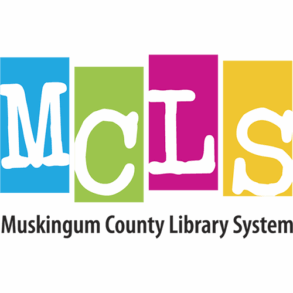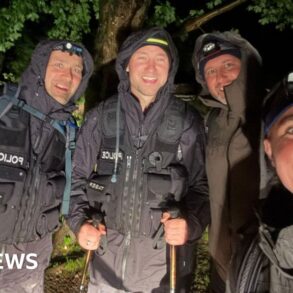
We find ourselves constantly behind the curve of technologies and digitalization, admits a CFO from a major insurance company. But when you have a century of legacy systems and processes, how do you transform without breaking what already works?
It’s a sentiment that resonates with financial leaders across industries. As businesses face mounting pressure to modernise operations, CFOs are increasingly finding themselves orchestrating complex transformations while keeping the financial engine running.
But how do you free up your best talent for change initiatives when they’re essential to daily operations? And more importantly, how do you maintain momentum when transformation is no longer a project with an end date, but a permanent state of being?
At Connect CFO’s Leadership Summit, finance leaders from biotech, insurance, and manufacturing shared their experiences of navigating this delicate balance. Their insights revealed a common thread: transformation is no longer a finite project but a permanent state of operations.
The Talent Paradox
One of the most pressing challenges identified was the allocation of key talent. While subject matter experts (SMEs) are crucial for transformation initiatives, they’re often equally vital to daily operations.
One of the panellists, head of operations from a major insurer, notes there’s often a “natural intention” to try to have SMEs contribute to projects while maintaining their regular roles. However, she argues strongly against this approach.
“People tend to believe that our energy is endless… And everything could be done as a sidekick – no, it can’t,” she says.
The solution? Complete dedication to transformation projects, with proper backfilling of day-to-day roles. This approach, while potentially more expensive in the short term, proves more effective in delivering successful transformation outcomes.
The Legacy Challenge
For organisations with long histories, transformation brings unique challenges. A talent product officer from a global toy company describes the complexity in his nearly century-old organisation.
“We have 25% of people who have been with us less than two years, we have a huge bunch of people who have been with us 20, 30, even 50 years… We don’t have a bell curve, it’s rather extreme,” he says.
This diversity in tenure creates sat he terms “clashes on how we actually make decisions,” particularly in consensus-oriented cultures where multiple stakeholders feel they should be involved in decision-making.
Whitepaper
Communication as a Critical Tool
The importance of clear, targeted communication emerged as a crucial success factor. A finance director from a biotech company shared a cautionary tale where insufficient communication led to misunderstandings.
“We had a project which was called like performance transformation and everybody perceived it as a cost optimisation, so we’ll be firing people across the globe. But in reality, the idea was that… we wanted to change the operating model,” he said.
Successful transformations require tailored communication strategies for different stakeholder groups. Smirnova advocates for a “playbook” approach, where messages are crafted specifically for each audience – from C-suite executives focused on bottom-line impacts to frontline staff concerned with day-to-day operational changes.
Managing the Human Impact
Perhaps the most challenging aspect of transformation is managing its impact on people. The talent product officer shared a compelling example of relocating their US headquarters from Enfield, Connecticut to Boston.
“It impacted a thousand of our colleagues,” he explains. The situation raised a complex challenge: how do you maintain engagement and productivity from employees who won’t be part of the organisation’s future?
He went on to acknowledge that this creates “really uncomfortable” situations, particularly when “you start seeing this is the new building that’s being built… and you’re getting people hired into it and they are all happy and smiling faces. And then you are sitting there… knowing you’re leaving in a year’s time.”
The solution lies in transparent communication and comprehensive support. In this case, the company provided a three-year adjustment period and service packages to help affected employees transition. Similar approaches have worked in smaller-scale transitions. As Smirnova notes from her experience of relocating finance operations from Ireland to the UK, success comes from allowing “a lot of time for uncertainties and unexpected conversations.”
Building Momentum
Rather than fighting change fatigue, successful transformations require building sustainable momentum. The panel shared several practical approaches:
- Identify and Empower Change Agents The biotech Financial Director emphasises finding the right people to champion change: “It’s quite important to find the relevant people who can do this role because it’s not only like you just formally appoint someone… it’s also important that this person has the authority and also the sort of formal and informal network to drive the change.”
- Create Project Identity Simple but effective tactics include giving projects distinctive names and visual identities. While some might dismiss this as superficial, the insurer’s Head of Operations argues that these “little silly, stupid things… are actually making a difference” in building engagement and recognition across the organization.
- Focus on the Willing As the Talent Product Officer puts it, using what he calls the “popcorn effect”: “You should really work on the ones that are motivated or that are receptive to the change and build on that momentum” rather than expending excessive energy on resistant individuals.
The Way Forward
What emerges clearly from these leaders’ experiences is that transformation success depends less on technical expertise than on human factors. The CFO’s role has evolved beyond financial stewardship to become an architect of change, requiring new skills in communication, people management, and organisational psychology.
As organisations continue to face pressure to modernize and adapt, the ability to lead continuous transformation while maintaining operational excellence becomes increasingly crucial. The key lies in building organisational capacity for ongoing change – through dedicated resources, clear communication, and careful attention to the human impact of transformation.
“Transformation is no longer a project-bound activity or exercise,” concludes the Head of Operations. “It’s more a part of organisation, a permanent part of organisation, because the world is changing so quickly around us.”
Was this article helpful?
YesNo
Subscribe to get your daily business insights
This post was originally published on this site be sure to check out more of their content.













































